Published on October 8, 2019
Midas Gold has been exploring the Stibnite Mining District, a site that has been mined off and on since the 1920s, for the last 10 years. We published our first plans for the site in 2012. Through continued work, studies and consulting with communities and other stakeholders, we refined our plans in an updated study in 2014, again when we filed our Plan of Restoration and Operations (“PRO”) with regulators in 2016 and in our modified PRO in 2019. Each iteration of these plans looks to improve upon our initial concepts, reduce the project footprint and enhance environmental outcomes. Despite all of this work, and sharing this information with the community, myths and misleading information about the Stibnite Gold Project persist.
Here are four areas of our current mining proposal that I believe people need more information.
Open Pits:
Midas Gold plans to excavate three open pits, two of which are expansions to existing open pits at site and one is the site of a former underground mine, processing facility and smelter. In the PRO, we propose to backfill the expanded existing Yellow Pine pit, which currently blocks fish passage, and to restore the East Fork of the South Fork of the Salmon River, so fish can travel to their headwaters for the first time in more than 80 years. The other two pits will both be partially backfilled and the Hangar Flats pit will be flooded so it can become a lake.
Tailings Dam:
The tailings dam proposed for the Stibnite Gold Project will be constructed in a manner entirely different from recent dams that have failed, such as Mt. Polley and Teton, and are frequently referenced by some as examples as what could happen at Stibnite. Our team has gone to great lengths to consider a wide range of possibilities and ensure our tailings dam is as secure and safe as possible. The Stibnite tailings dam will be built with a 1.6 factor of safety, constructed with rock– not earth or tailings–, 90 percent surrounded by granite mountains, lined to prevent water seepage or leakage through or around the dam, built on solid granite foundations and wall abutments, and be further reinforced with approximately 65 million tons of development rock placed as a buttress across the entire mouth of the valley. By adding this buttress, we increase the factor of safety to more than three.
Water Quality:
Water quality at the site is poor. It is a result of naturally occurring elevated levels of mineralization in the rocks and due to the extensive mining activities that occurred well before Midas Gold’s involvement in the site and before many modern day environmental regulations existed. We have committed to improving water quality over current conditions by removing many of the historic legacy causes of degraded water quality, and by ensuring our modern operations are done to the highest standards, including lining the tailings storage facility and capping the development rock storage facilities. It is also important to once again state, the project site is not a source, now or in the future, of acid mine drainage. This is due to the presence of buffering minerals in the rocks (such as carbonates like limestone) and has been demonstrated by the complete lack of acid mine drainage from all the legacy activities, plus our own extensive multi-year testing.
Benefits of Mining & the 1872 Mining Law:
The 1872 Mining Law governs the transfer of rights to mine gold and other minerals from federal lands. In our case, more than 90 percent of the mineral resources proposed to be extracted as part of the Stibnite Gold Project lie on Midas Gold’s private land, not on public Forest Service land. Some claim that by allowing us to mine on Forest Service land, the government is giving the resources on site “away for free.” This is simply not true. Not just because most of the resources for our project are already owned by Midas Gold but because money is given back to the local, state and federal government.
Modern, first-world countries see the benefits of mining primarily through income taxes. Third-world countries with weak income tax collection and enforcement tend to collect royalties, which is offset against income taxes and reduces income taxes overall. Regardless of who owns the gold at Stibnite, the local, state and federal governments will see the benefits of the project through taxes. And of course, most critics of the 1872 Mining Law forget to mention that we will have to invest $1.2 billion in capital to build the mine, spend another ~$2.4 billion in mining and processing costs and hire and pay hundreds of Idahoans along the way. We also have to fund tens of millions of dollars in clean-up of legacy impacts that have no other source of funding today. The distribution of revenue from the project is illustrated in the pie chart below.
The Stibnite Gold Project will bring many benefits to Idaho and is a good idea for our communities and our environment. If you have questions about our project, I encourage you to reach out to our team or stop by our Donnelly office during the second Friday of each month for our community office hours.

